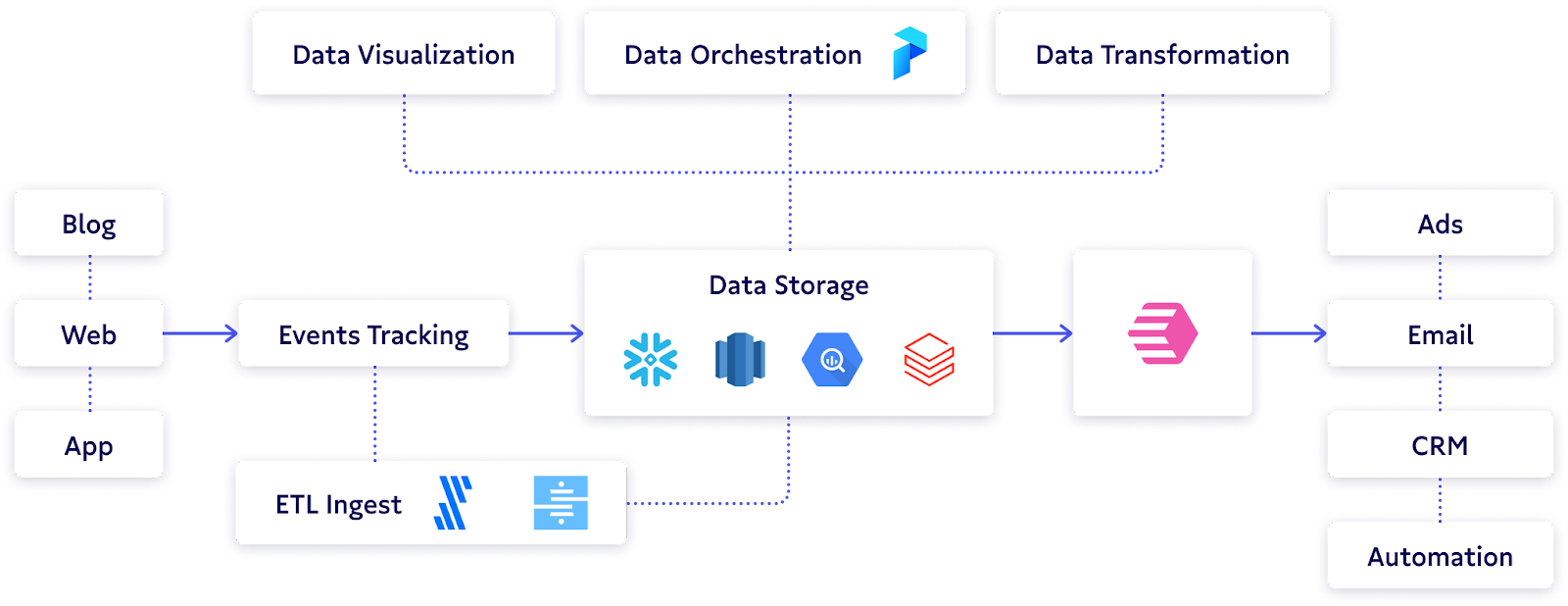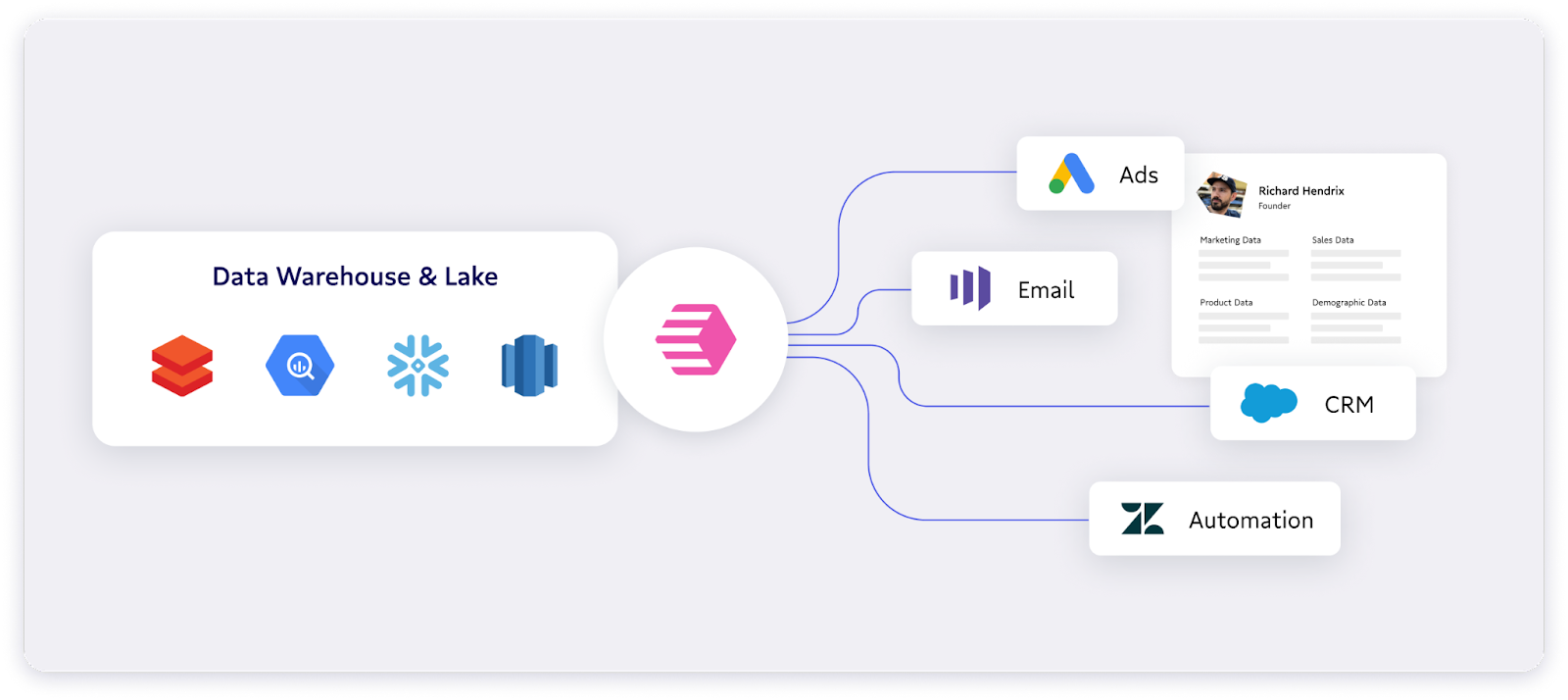Our goal at Census is to help data engineers extend the impact of their work and automate with confidence, which is why we're thrilled to formally announce our partnership with Prefect.
This blog was originally written by Andrew Black, Head of Partnerships at Prefect. See Prefect's announcement here!
Data engineers have often shied away from pushing data to SaaS tools because it can get messy and hard to maintain. But Census solves the “last mile” data activation problem and easily syncs data to over 100 of the most popular business tools.
Census gets better data into users’ hands, all orchestrated and viewed from the best dataflow automation tool: Prefect.

Not another dashboard, please
In an ideal world, data producers and data consumers work together to provide accurate, timely, and usable insights for decision makers at all levels of an organization.
Many companies build a single source of truth by collecting, formatting, and cleaning customer data and storing it in a data warehouse.
Traditionally, they make that centralized data accessible through BI and reporting tools such as Looker or Tableau.
This might work well for data analysts and finance teams who prefer to work with raw data, but for a lot of teams – particularly the revenue and marketing organizations – it’s not efficient. In fact there’s a term for this, NADP: “Not Another Dashboard Please.” (OK, I just made that up but it’s pretty catchy, right?)
Every organization wants to be “data-driven.” Looking at data through BI tools only makes you “data-informed” – it doesn’t inspire action. Simply collecting and analyzing data is no longer a competitive advantage in any market.
While dashboards were a good stopgap solution, the rise of Reverse ETL means you can free the data that was formerly locked in BI reports.
Reverse ETL is the best way to activate data
Reverse ETL represents a category of tools that “push” data from disparate sources (though typically a data warehouse) and make it available in end-user SaaS tools such as Salesforce, Zendesk or Marketo. An example would be a salesperson viewing not just open opportunities for a customer, but also product activity, CSAT, or payment history without leaving their CRM.

This might sound like a simple problem to solve: can’t you just run ETL or ELT in reverse?
Turns out it’s not that simple. Every SaaS tool has unique formats, API quotas, and rate limits, and every implementation requires further customization. Keeping data flowing accurately into these systems is a big challenge, and that’s why Reverse ETL tools are such a breakthrough.
Census was the first to market with a Reverse ETL solution for the modern data stack, and it continues to be a leader with one of the most comprehensive integration sets, fastest data processing speeds, and reliability. Its G2 reviews demonstrate the love it has garnered with users.

As with many category creators, they’re also thought leaders in the space. They advocate not just for putting data where the users are, but also what that can enable for data teams: namely, freeing up time to work on more valuable things such as defining and maintaining centralized, trusted performance metrics.
Prefect 🤝 Census: Better together
Prefect and Census have been working together for a while. We developed a Census integration for Prefect 1.0, and lots of joint users have enjoyed the benefits. With our latest Census integration for Prefect 2.0 (“collection” and “block” in Prefect 2.0 terms), our tools are easier to use together and more powerful. We’ve done a number of events together and our teams enjoy working together as much as we love delighting our customers. To us, that’s the foundation for a fantastic partnership.
Ok, enough of the background…what can data engineers do with Prefect and Census together?
- Trigger Census syncs based on upstream tasks and events.
- Reduce time to resolution for failed pipelines by enabling automated actions within the pipeline, or by better surfacing errors that assist with troubleshooting.
- Communicate data status to end users so they know the freshness of their data, and the reason for any delay.
- See the status of Census syncs the in Prefect Coordination Plane, along with all your other dataflows.
And because Census has a designated Block in Prefect Cloud, setup and reuse in Prefect is a breeze. You get:
- Fresher, more reliable data for end users
- Fewer support tickets
- Faster issue resolution
- Significantly less development time and maintenance
The net impact? More effective and efficient data engineering and analytics, and happier, more productive end users who act with confidence.
If you’d like to try it out, learn how to get started with Prefect 2.0 and Census.

















